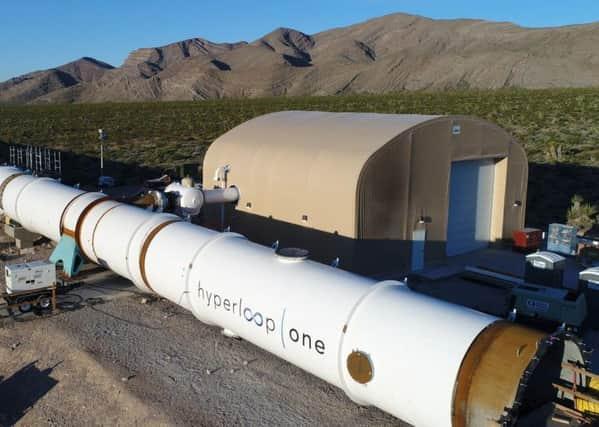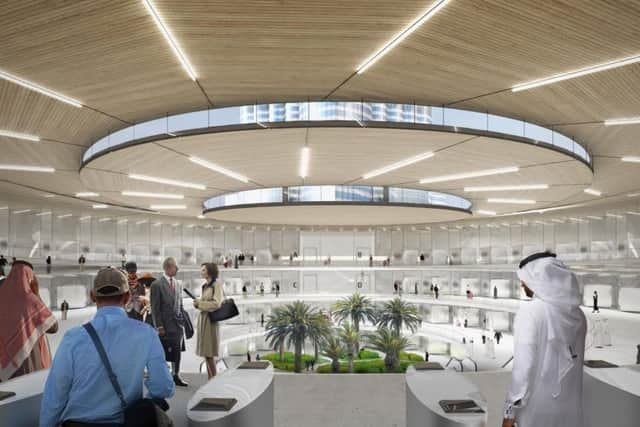Scotland-Wales link in running for Hyperloop route
This article contains affiliate links. We may earn a small commission on items purchased through this article, but that does not affect our editorial judgement.


The futuristic idea was originally the brainchild of SpaceX and Tesla entrepreneur Elon Musk, and would see passenger and cargo capsules travel inside a tube at speeds of up to 700mph.
Advertisement
Hide AdAdvertisement
Hide AdExecutives from Hyperloop One joined dignitaries and policymakers today at its Vision for Europe summit to discuss plans to create a network of routes, spanning more than 3,100 miles and connecting more than 75 million people in 44 cities.


The nine proposed routes, revealed as part of the firm’s Global Challenge, include a 658-mile link starting in Glasgow, making its way via Edinburgh down the east coast to London before terminating in Cardiff – with the entire journey taking just 89 minutes.
The longest section of the network, in Germany, would cover more than 1,200 miles and connect major cities such as Hamburg, Berlin, Munich and Frankfurt.
With Hyperloop One, passengers and cargo are loaded into a pod and accelerated gradually via electric propulsion through a low-pressure tube. The pods would use magnetic levitation to glide at airline speeds for long distances.


“Europe embraces new ideas in transportation like no other region in the world and is uniquely positioned to take the next great leap in transportation with Hyperloop One,” said Shervin Pishevar, co-founder and executive chairman of Hyperloop One.
“Our vision is to, one day, connect all of Europe with our Hyperloop One system, networking the entire continent.”
Chief executive Rob Lloyd added: “For Europe, Hyperloop One technology is complementary to existing highways, rails, ports and overall infrastructure.
Advertisement
Hide AdAdvertisement
Hide Ad“Hyperloop One will offer Europe’s transport grid with an option that is more efficient, greener, on-demand and faster. We’ve seen a lot of interest here, and we look forward to creating a partnership to enhance the continent’s transport infrastructure.”
The Hyperloop One Global Challenge kicked off in May last year as an open call to individuals, universities, companies and governments to develop comprehensive proposals for deploying its technology in their region. The nine European proposals have been whittled down from more than 2,600 original submissions.
The project is still in the development stage, but could potentially be ready for the first passengers by 2020.
HypEd, the Hyperloop society at the University of Edinburgh that comprises a team of 50 students from the university’s engineering, economics and business schools, was recently selected to build a prototype for the global finals of the SpaceX Hyperloop pod competition, which will take place in August at the SpaceX headquarters in California.
The Edinburgh team is one of 24 around the world, and one of only four from Europe, selected to compete as a finalist. It is being supported by electronic components distributor RS in the building of the prototype pod, along with further backing from chip developer Cirrus Logic and the University of Edinburgh Innovative Initiative Grant.
For the SpaceX competition, HypED’s three sub-teams will build the key elements of the prototype pod, including static elements such as the chassis, shell and aerodynamics; dynamic elements like levitation, propulsion and braking; and “smart” elements, for example batteries, control electronics and software.